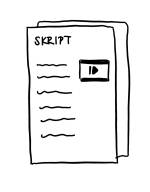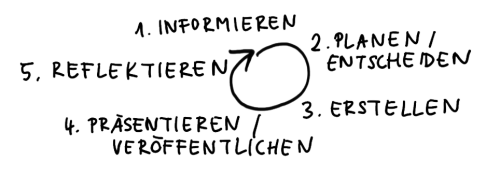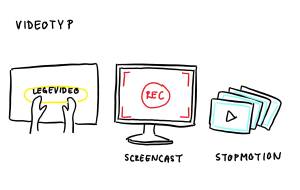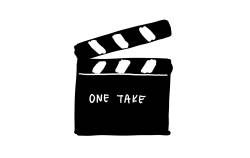Christian Stoll & Ceylan Türkyilmaz 2021
Creating instructional videos as an action-oriented teaching method
Learning processes can be designed not only by learners watching videos. It is also possible to build learning processes around the creation of an instructional video. The goal is for students to create their own instructional videos, which is an interesting alternative to lectures, posters, or written assignments.
Here is a possible procedure:
- inform
- plan / decide
- Schedule
- Target (group) of the video
- Writing text
- Video concept
- Post production
- Video script / storyboard
- create
- Prepare materials
- Test shots
- Shooting
- Post production
- present / publish
- reflect
The first thing learners need to do is gather the information that is important for the video.
Next, ideally create a timeline, when do I have time to prepare the materials, do some screen tests, create the video, do any post-editing, and when do I actually want the video to be ready.
Next is the question, what is the goal of the video? And who is the target audience. Should the viewers be made aware of a certain topic, for example? Should a certain problem be shown and solved? Should certain working methods or steps be shown?
Once these questions have been answered, the question of the video type arises. Depending on the technical equipment, this must either be specified by the teacher or the learners can decide for themselves how and with what they would like to design the video. Different design methods are available here. Relatively easy to implement are laying videos, screencasts or stopmotion videos. If the learners are creating videos for the first time, the teacher should specify a design method and discuss it with the learners.

After the goals of the video are clear and the design method has been selected, a script can be created. The script consists of a table with two columns. In the left column is the text that will be heard later in the video, in the right column is noted what should be seen at that moment in the video.
After the script has been completed, it is a good idea to try it out and test or practice whether what you have noted in the script works. Here you can see if you still need to make changes to the script and if you still need material.
With videos it is like with many other things, the more time and effort you put into the production, the higher the quality can become. But you can ask the same question, how can I reduce the effort to get a reasonable or for me sufficient result in a certain time. Especially for learners who are doing this for the first time, it is important to keep the technical effort low in order not to overstrain the learners.
The one-take principle is also suitable for this. With a one-take, you try to create the entire video in one shot without any cuts or post-processing. As a rule, the recording should be practiced several times and then recorded several times so that the best recording can be selected at the end. For example, screencasts and layering videos are suitable for the one-take principle.
The one-take principle also offers the possibility of a level playing field, i.e. learners who already have experience with creating videos have no particular advantage here. The overall focus should not be on the quality of the video but much more on the creative presentation of the content.
At the end, videos are presented, learners give each other feedback and reflect on the creation process. What went well, what would you do differently next time, where do you see potential for development or what would you like to work on in the future. It is also a good idea to document the steps or the creation process in writing in a learning diary or a learning portfolio and in this context also record the reflection in writing.



